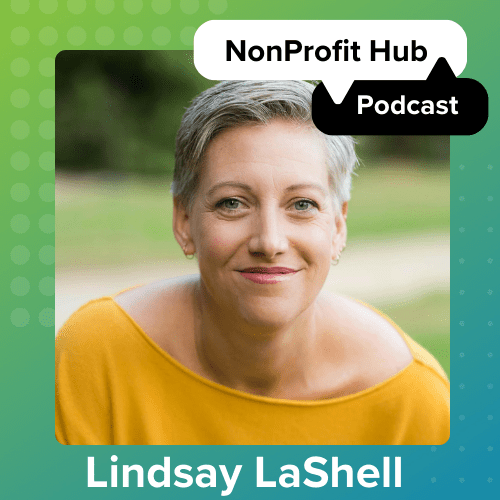Denise McMahan is a guest contributor for Nonprofit Hub, and is the founder and publisher of CausePlanet.org where nonprofit leaders devour Page to Practice™ book summaries, author interviews and sticky applications from the must-read books they recommend.
_____________
Nonprofit boards: Three is better than one when it comes to superior decision-making
While it seems counterintuitive that working in three modes is easier than one, author Cathy Trower will have you believing the trio trumps all when you’ve read her book The Practitioner’s Guide to Governance as Leadership.
How Three Celebrated Modes of Thinking Can Revolutionize Your Board
Trower’s book expands upon Governance as Leadership’s influential work with a wealth of examples from high-performing nonprofit boards as well as insightful guidance on how to successfully operate in three celebrated modes: fiduciary, strategic and generative.
Share in the “Aha” Answers from the Author
We recently hosted a glued-to-your-seat interview with author Cathy Trower about The Practitioner’s Guide to Governance as Leadership. This book is an essential how-to edition for its celebrated predecessor, Governance as Leadership by Chait, Ryan and Taylor.
Real Answers to Real Challenges
Since there were more questions from our webinar attendees than Trower could address in our time together in the webcast, she generously answered what we couldn’t get to in this article—lucky you!
In the answers that follow, Trower discusses:
- Fostering teamwork
- Opening up conversation among tight-lipped members
- Embracing the GaL model
- Anticipating what board prospects should be asking you
- Overcoming lack of consensus
Fostering Teamwork
Author interview attendee: How do you suggest fostering teamwork on a board?
Trower: Have the board name great teams they know (e.g., sports, emergency room, flight deck, SWAT/military). Ask what they all have in common. They will say common purpose, trust, goals, role clarity, etc. Discuss purpose–Why are we here (as a board)? Set clear, compelling and consequential goals for the board and committees. Help members see how they add value. Discuss team performance and what that would look like in the boardroom. Don’t allow individuals to subvert the collective performance.
Opening Up Conversation
Interview attendee: I’m a new CEO of a small nonprofit. I want the board to be challenged and give more wisdom than it has previously. The members are so used to budgets and reports, though, that every time I bring up a larger issue, they clam up. What can I do?
Trower: Talk to them about why they “clam up” because you have to get to the root cause. Is it because they lack knowledge and don’t want to appear stupid? Is it because they lack passion for organizational issues? Are they not really experts on the issues you face? Is it because it feels strange and they’re just not used to it? Have they had bad experiences in the past where people stepped up and got smacked down (before you got there)? Unless you can get to the “why” you won’t be able to change the behavior.
Embracing the GaL Model
Interview attendee: How do board members feel about Governance as Leadership? Do they embrace the challenge or feel threatened?
Trower: As with anything new, responses are mixed. One thing is for sure: If the leaders (e.g., CEO, chair) are ambivalent/skeptical, the board senses it and gets skittish. But every board member wants to be engaged; they want to know it matters that they show up at meetings. Everyone’s time is precious! They want their intellectual capital tapped. I always ask when getting started and after they have read chapter one of the book about the GaL model, “What resonates with you?” “What doesn’t?” “What has you concerned or perplexed?” And after they’ve done some tri-modal thinking/practice, ask them: “How did that go?” “What were the benefits of thinking in three modes?” “What were the challenges?” “Why?”
Are You Ready to Answer What Board Prospects Should be Asking You?
Interview attendee: I’ve served on many boards and have stopped serving because I feel like they are a waste of my time. The staff could figure out the budgets and operations better than I could, and all the board meetings were just opportunities for the CEO to report progress. I have some experience, though, and wonder how I could better vet a board where I could actually contribute. What do you suggest?
Tower: Prior to agreeing to serve, ask the leadership some questions: “What are the 2-3 most important issues/decisions the board worked on/made during the past year?” “What are the 2-3 most important issues that will come before the board in the year ahead?” “What are the biggest challenges the organization faces?” How do you plan to utilize the board?” “What do you see as the skills I bring to these issues/to the board table?”
Changing the Culture to Three Modes of Decision-Making
Interview attendee: What should a leader focus on when trying to change a culture to one that supports the Governance as Leadership principles?
Trower: This is really complicated so there is no simple answer, but I will say this: First, a leader must understand the culture that exists. Importantly, a culture is comprised of artifacts (the things you can see and the policies in place), espoused values (what everyone says they value) and underlying assumptions (the stuff people are sometimes not really aware of but that actually drives behavior). The key is to get to the underlying assumptions–-how people really think.
Building Consensus
Interview attendee: A board I’m working on cannot come to consensus on anything. We have such divergent viewpoints that we can’t get anything done. How could Governance as Leadership help us?
Trower: GaL is very much about deciding what to focus on and how various stakeholders see the issues and then deciding what makes sense for the organization. Divergent views are actually healthy. But you may be bringing issues to the board that are already too far downstream in the thinking process and people are disagreeing about tactics. Try to get issues to the board early (upstream in the thinking and framing stages) and then discuss them together. Discuss who thinks what and why and then figure out how to get on one page.
Cathy Trower’s explanation of how to practice working in three modes we mentioned above was particularly helpful and I encourage you to listen to the sound bite in the interview archives when she discusses them. You can also read more interview answers about The Practitioner’s Guide in our Page to Practice™ summary or purchase Trower’s book at Jossey-Bass.







